Do you want to learn how to write a blog that’s not just good but excellent?
By “excellent,” I’m referring to a blog that is optimized for search engines, attracts significant traffic, and drives conversions.
Blogging has become a universally adopted strategy across various industries for achieving content marketing goals, and for good reason. Blogging statistics show that businesses prioritizing blogging are 13 times more likely to achieve a positive return on investment (ROI).
Here at OptinMonster, we’ve been promoting our software through blogging for over 10 years, and I personally have been a professional writer for over 15 years. I take pride in crafting not just good, but great blogs that improve SEO, drive traffic, and help our readers solve their problems. That’s why there’s no better place to learn the art of blog writing than right here with us.
In this article, I’ll share my top blog tips, so you can learn how to write excellent blog posts. Along the way, I’ll also share inspiring blog examples from the OptinMonster blog.
How To Write a Blog in 10 Steps
To learn how to write the best blogs to grow your business, follow these steps:
- Choose the Right Blog Topic
- Conduct Effective Keyword Research
- Structure Your Blog Post
- Write Engaging and Informative Blog Content
- Incorporating SEO Best Practices
- Using Visuals Effectively
- Craft a Compelling Headline
- Editing and Proofreading
- Promoting Your Blog Post
- Measuring Success and Performance
Step 1. Choose the Right Blog Topic
Brainstorming the right topic is the foundation of a great blog post. It should resonate with your target audience and reflect their interests and needs.
There are numerous ways to generate the right blog post topic, such as:
- Understand Your Audience: Know your audience’s interests, problems, and questions to create relevant and engaging content.
- Assess Your Expertise: Choose topics that align with your knowledge and passion for authenticity and depth.
- Research Market Trends: Stay updated with current trends in your niche to ensure topical relevance and appeal.
- Analyze Competitors: Look at what competitors are doing to find gaps you can fill or topics you can cover better.
- Consider SEO Potential: Use keyword research to find topics with high search potential but manageable competition.
- Evaluate Evergreen Potential: Focus on long-term relevant topics to continually attract traffic.
- Balance Interest and Value: Choose topics that interest you while providing value and solutions to your audience.
- Check Social Media for Inspiration: Use social media trends and discussions to find topics that resonate with users.
- Listen to Your Audience: Pay attention to feedback and questions from your readers for topic ideas.
- Be Flexible and Adaptive: Be open to changing your topic strategy based on audience response and evolving trends.
Remember, a relevant and intriguing type of blog topic is more likely to attract and retain readers.
Also read: 130+ Blog Ideas: The Ultimate List of Blog Post Ideas for Every Niche
Step 2. Conduct Effective Keyword Research
Keyword research is a critical step for bloggers. It helps you understand what your audience is searching for and how to tailor your content to meet those needs.
- Use Keyword Research Tools: Use keyword research tools like Google Keyword Planner, SEMrush, or Ahrefs to find relevant keywords with good search volume.
- Understand Search Intent: Analyze the intent behind the keywords – whether users are looking for information, making a purchase, etc.
- Analyze Competitors: Look at the keywords your competitors rank for to identify opportunities and gaps in your content.
- Consider Long-Tail Keywords: Focus on long-tail keywords as they are less competitive and more specific to user queries.
- Study Trends: Keep an eye on trending topics and keywords in your industry for timely and relevant content ideas.
- Evaluate Keyword Difficulty: Assess the competition for keywords to determine their ranking feasibility.
- Incorporate Local SEO: Include local search terms to attract a geographically targeted audience if applicable.
- Refine and Iterate: Regularly update and refine your keyword list based on performance data and market changes.
Aim for keywords with high search volumes but low competition to increase your chances of ranking higher in search results.
Also read: SEO Made Simple: Where & How To Use Keywords in Your Content
Step 3. Structure Your Blog Post
A perfect blog post enhances readability and keeps your audience engaged. Start with an intro that hooks the reader, followed by an in-depth body that delves into your main points, and conclude with a summary or call-to-action (CTA).
Use subheadings, bullet points, and short paragraphs to break up the text and make it easier to digest. I also suggest using a table of content to help readers understand the scope of the post and to better navigate the content.
In our own OptinMonster blog post about eCommerce optimization, we break the article into 13 steps:
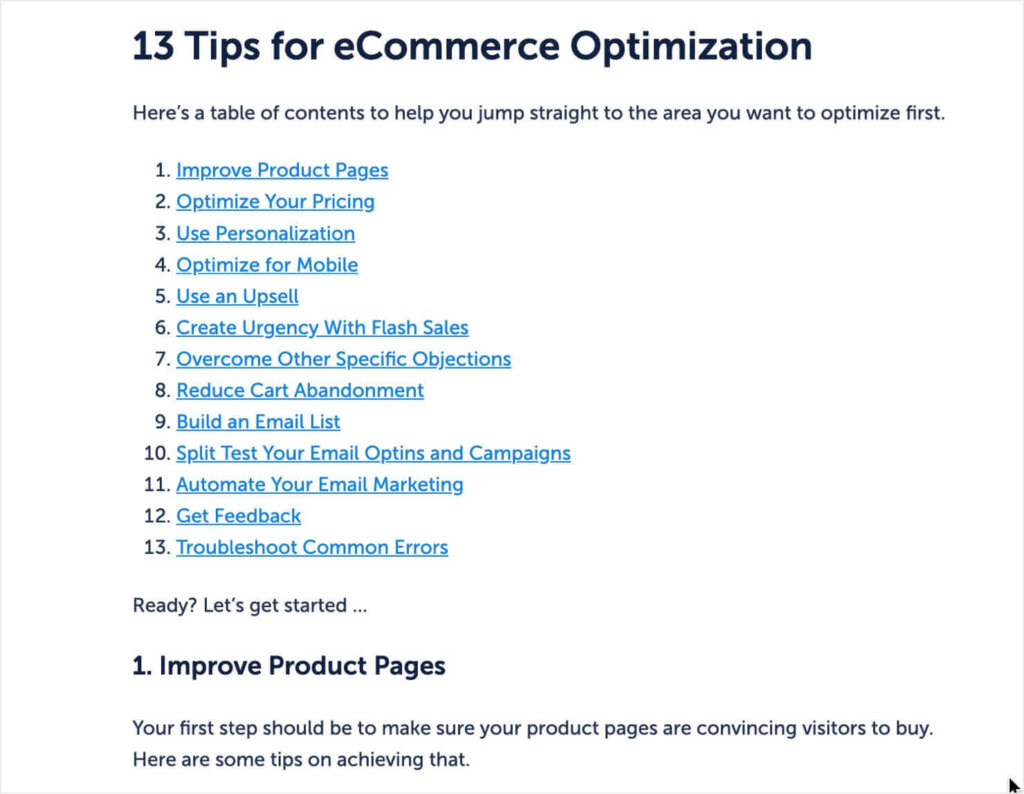
Each of the items in this table of contents is linked to the corresponding section in the article.
These tips sections required a good bit of explanation, so we included multiple subheadings to break the text into small, digestible chunks:

Notice how small the blocks of text are. Online readers don’t want to see huge blocks of text. Instead, you should use short paragraphs and frequent headings. This practice makes your content more scannable and reader-friendly.
Also read: 14 Content Formats Proven to Boost Audience Engagement
Step 4. Write Engaging and Informative Blog Content
The content of your blog should be both informative and engaging. Share unique insights, back up your points with data and examples, and write in a conversational tone. Bonus tip, add a frequently asked questions (FAQ) section right at the end.
Remember, the goal is to provide value to your readers, whether it’s through sharing knowledge, offering solutions, or inspiring them.
Also, avoid fluff! A rich and lengthy piece of content does not mean adding irrelevant information.
Also read: Words that Sell: 41 Copywriting Templates For Marketers
Step 5. Incorporating SEO Best Practices
Optimizing your blog for search engines is crucial for visibility.
- Optimize Title Tags and Meta Descriptions: Craft concise, keyword-rich titles and descriptions that accurately summarize your content and entice clicks.
- Use Header Tags Effectively: Structure your content with clear, hierarchical headers (H1, H2, H3) to improve readability and SEO.
- Optimize URL Structure: Create short, descriptive URLs with keywords that reflect the content of your blog post.
- Internal and External Linking: Enhance your content’s value and authority by linking to relevant internal pages and reputable external sources.
- Optimize Images: Use relevant images with descriptive file names and alt text including keywords, for better SEO and accessibility.
- Mobile-Friendly and Responsive Design: Ensure your blog is easily navigable and visually appealing on mobile devices for better user experience and SEO.
- Page Load Speed: Improve your website’s loading time, as faster pages provide a better user experience and are favored by search engines.
- Regularly Update Content: Keep your content fresh and updated to maintain relevance and authority in your niche.
These practices help improve your own blog’s SEO, making it more likely to rank higher on search engine result pages (SERPS).
Also read: SEO Best Practices: Simple Routines for Ultimate Success
Step 6. Using Visuals Effectively
The human brain processes visual content a lot faster than text-based content. That’s why adding captivating images can help boost your engagement.
There are tons of awesome free resources for finding high-quality royalty-free images.
But honestly, you’d probably be better off creating your own images. Or, if your blog niche calls for it, taking your own photos. Stock photos are great when you’re in a pinch, but they aren’t super personal.
For OptinMonster, we do use Adobe, a premium stock photo site, to add high-quality graphics for our posts’ featured images:
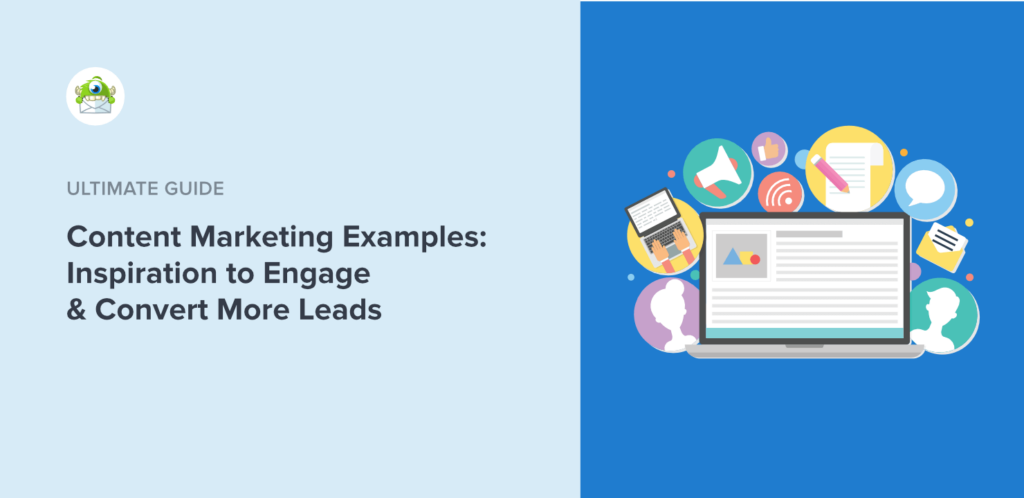
However, throughout our blog posts, we mostly use custom graphics and example screenshots rather than stock images. Visuals that can significantly enhance the appeal of your blog post. They break up text, illustrate points, and make complex topics more understandable.
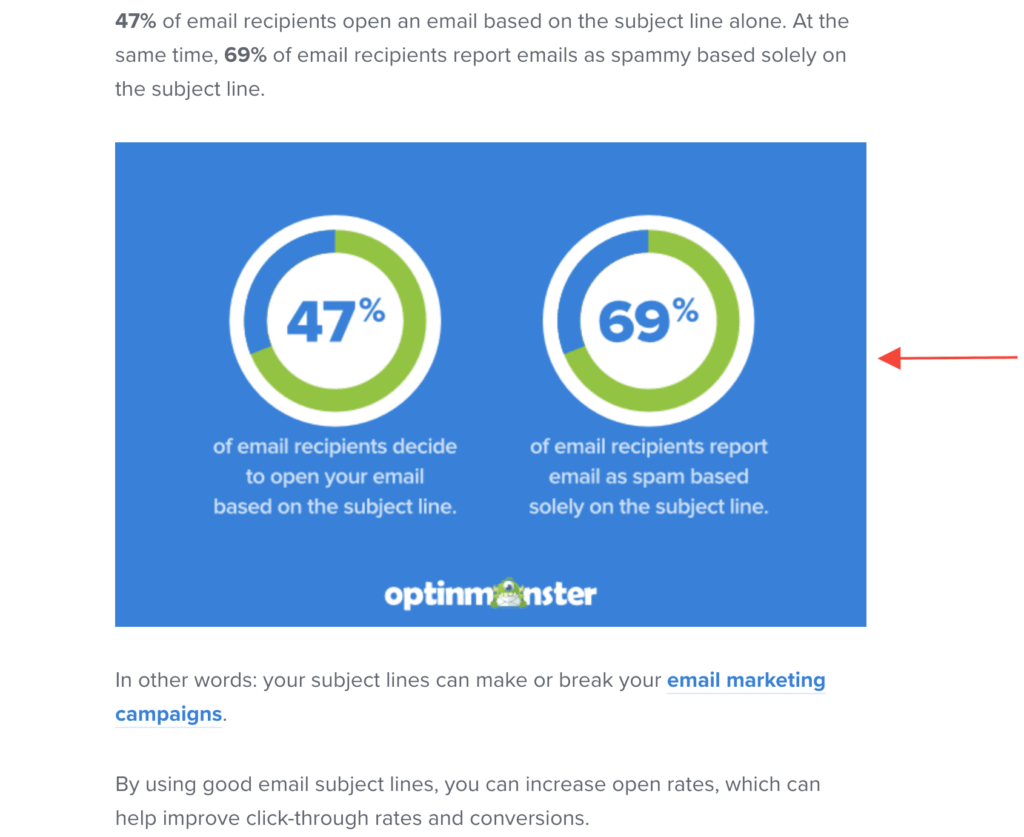
The screenshot above shows how we used an image in our “Best Email Subject Lines” blog to illustrate statistics effectively.
Great content means using high-quality images, infographics, or relevant videos. Remember, visuals should complement your writing, not distract from it.
Step 7. Craft a Compelling Headline
Your headline is the first impression readers have of your blog post. Make it count! A compelling blog title should be clear, concise, and grasp reader’s attention.
It should promise value and prompt the reader to continue reading. Use power words and address the reader directly to create a sense of urgency and relevance. When I’m writing a headline, I focus on 3 things:
- Briefly describing the blog’s content
- Catching the reader’s attention
- Explaining the benefit of reading the blog
Here’s one of our articles that gives effective headline examples:
90 Game-Changing Headline Examples to Boost Your Click-Through Rate!
Not only does it contain a lot of great headlines, but it also has an effective headline. It nails all 3 of the headline focuses I mentioned above:
- It explains that the blog post includes 90 headline examples.
- The large number and the power word “game-changing” catch readers’ attention.
- The phrase “boost your click-through rate” clearly explains how readers will benefit from the blog post.
Remember, even when you’ve learned how to write great blog posts, you won’t get readers unless you also write compelling headlines.
Step 8. Editing and Proofreading
Editing and proofreading are critical for ensuring the quality of your blog post. Check for grammatical errors and awkward phrasing, and ensure your post flows logically.
Tools like Grammarly can be helpful, but nothing beats a thorough read-through. I personally use Grammarly to help catch typos and other errors, but I carefully review every suggestion it gives. Also, it’s always a good idea to have someone else read through your post for a fresh perspective.
Step 9. Promoting Your Blog Post
Writing a great blog post is just the first step; promoting it is equally important. Share your post on social media, include it in your email newsletter, and engage with your audience through comments.
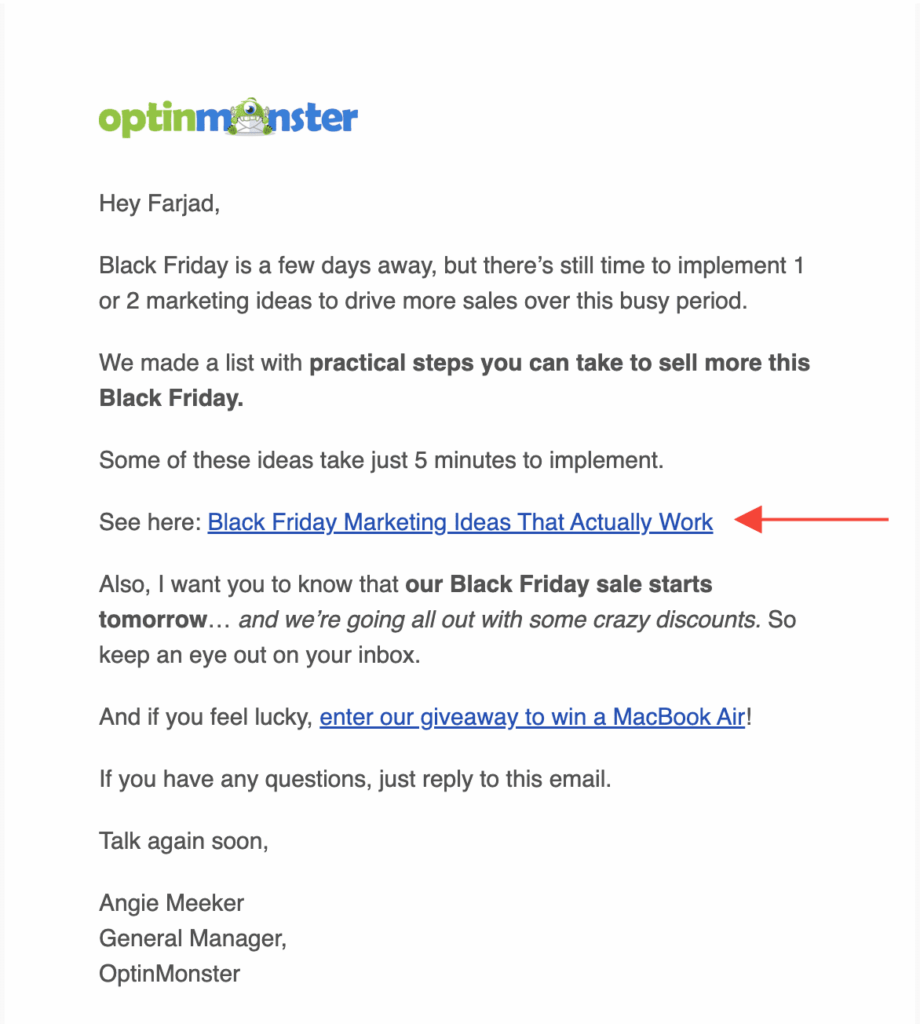
In the example above, you can see how we at OptinMonster incorporated our “Black Friday Marketing Ideas” blog into the email we sent out to our subscribers.
Effective promotion increases your post’s reach and drives more traffic to your blog.
Step 10. Measuring Success and Performance
To gauge the success of your blog post, track key performance metrics. Tools like Google Analytics provide insights into how your audience interacts with your post.
Here are a few metrics to look at to measure the success and performance of your blog post:
- Views: The total number of times your blog post has been viewed. Indicates the level of interest or appeal your post has generated.
- Average Engagement Time: The average time visitors spend on your blog post. A longer time indicates more engaging and relevant content.
- Comments and Shares: The number of comments on the blog post and social shares across social media platforms. Importance: Reflects the level of reader engagement and the post’s ability to generate discussion or be shared.a
- Keyword Rankings: The position of your blog post in search engine results for targeted keywords. Higher rankings can lead to more organic traffic.
- Backlinks: The number of external links pointing to your blog post. Indicates the post’s authority and quality, as other sites are referencing it.
- Conversion: The number of times users take a desired action (like subscribing to a newsletter, downloading a resource, making a purchase) after reading the blog post. Directly correlates to the effectiveness of the blog post in achieving specific business goals.
Use this data to refine your blogging strategy and improve future posts.
Also read: The 8 Best Google Analytics WordPress Plugins
This step-by-step guide to writing a blog post has covered everything from selecting a specific topic to measuring your blog’s performance, providing you with all the necessary tools and insights to craft a compelling blog.
Monetize Your Blogs With OptinMonster
Writing quality content is only half the battle; a successful blog must convert those readers into leads and, ultimately, paying customers.
At OptinMonster, we understand the challenges bloggers and businesses face when writing blog posts. Therefore, our platform is designed to help you maximize the potential of your blogging efforts.
With OptinMonster, you can effectively capture your audience’s attention and convert readers into subscribers,
Whether you’re looking to increase engagement, grow your email list, or boost conversions, OptinMonster offers the tools and insights you need to succeed in the ever-evolving blogging world.
So, as you apply the tips and strategies from this blog, consider how OptinMonster can be a part of your success story. With our powerful lead generation software, you can take your blogging to the next level and achieve your digital marketing goals.
Click below to start your 100% risk-free OptinMonster account today, and transform your blog into a powerful asset for your business or personal brand. Happy blogging!
BONUS: Done-For-You Campaign Setup ($297 value)
Our conversion experts will design 1 free campaign for you to get maximum results – absolutely FREE!
We hope you enjoyed this post. If you did, you’ll definitely want to check out the following resources:

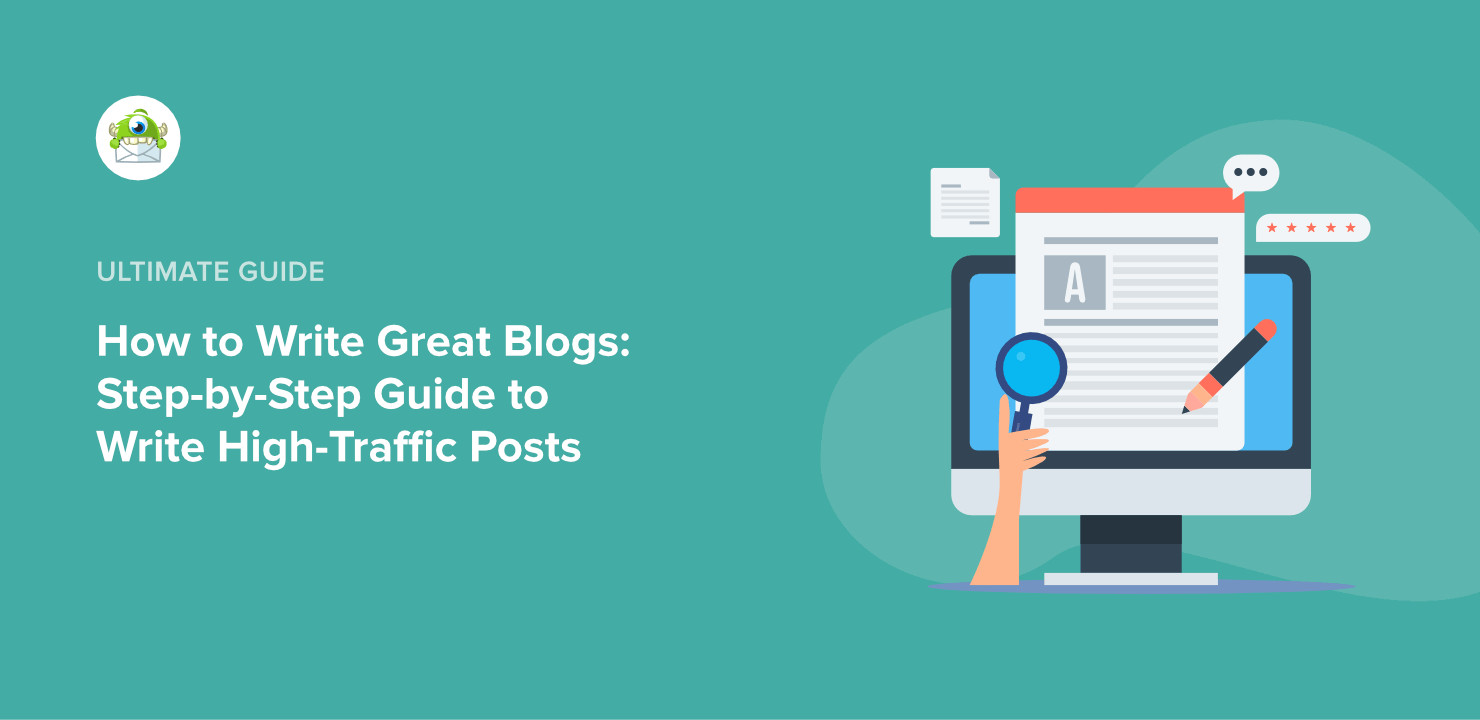
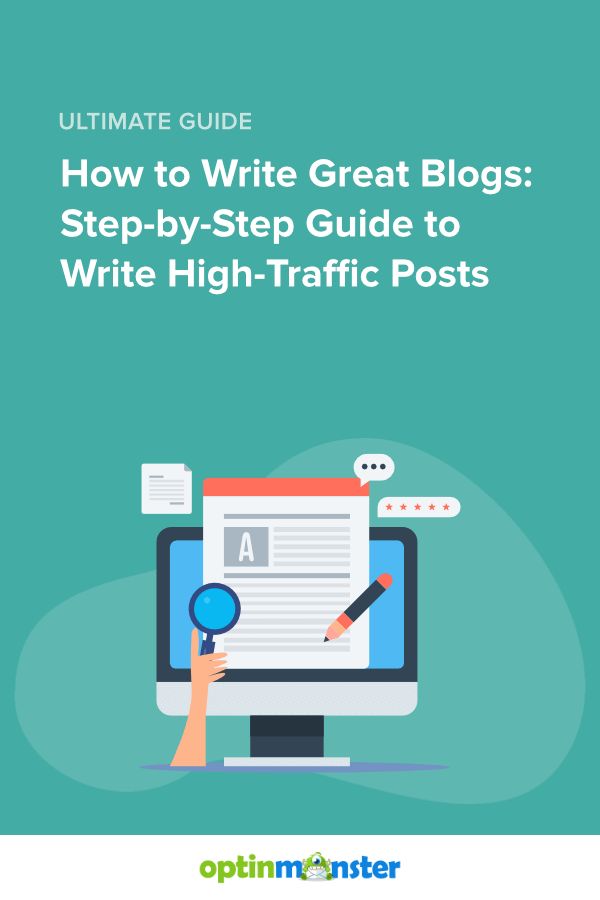




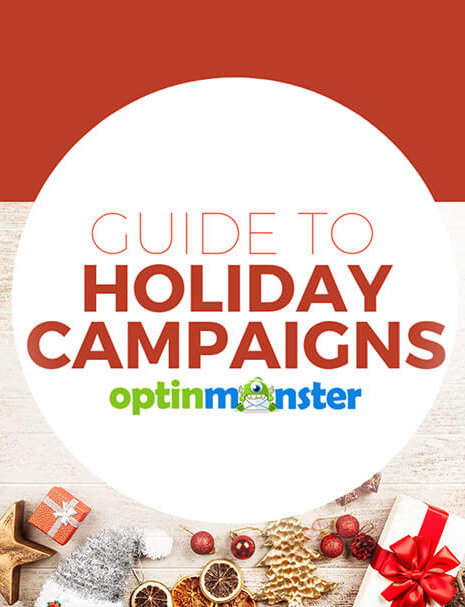
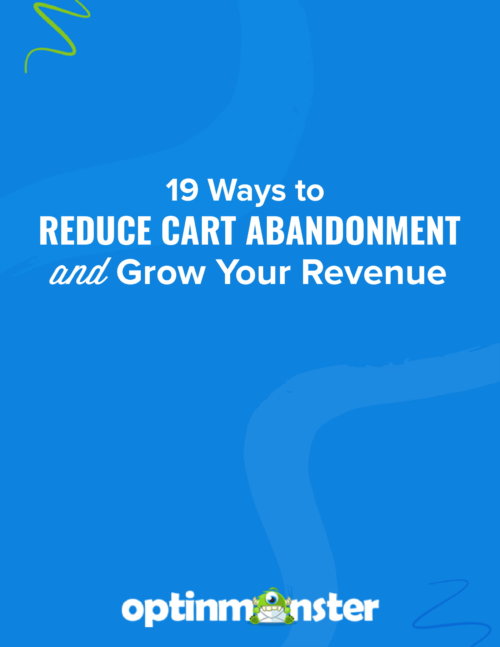



Add a Comment